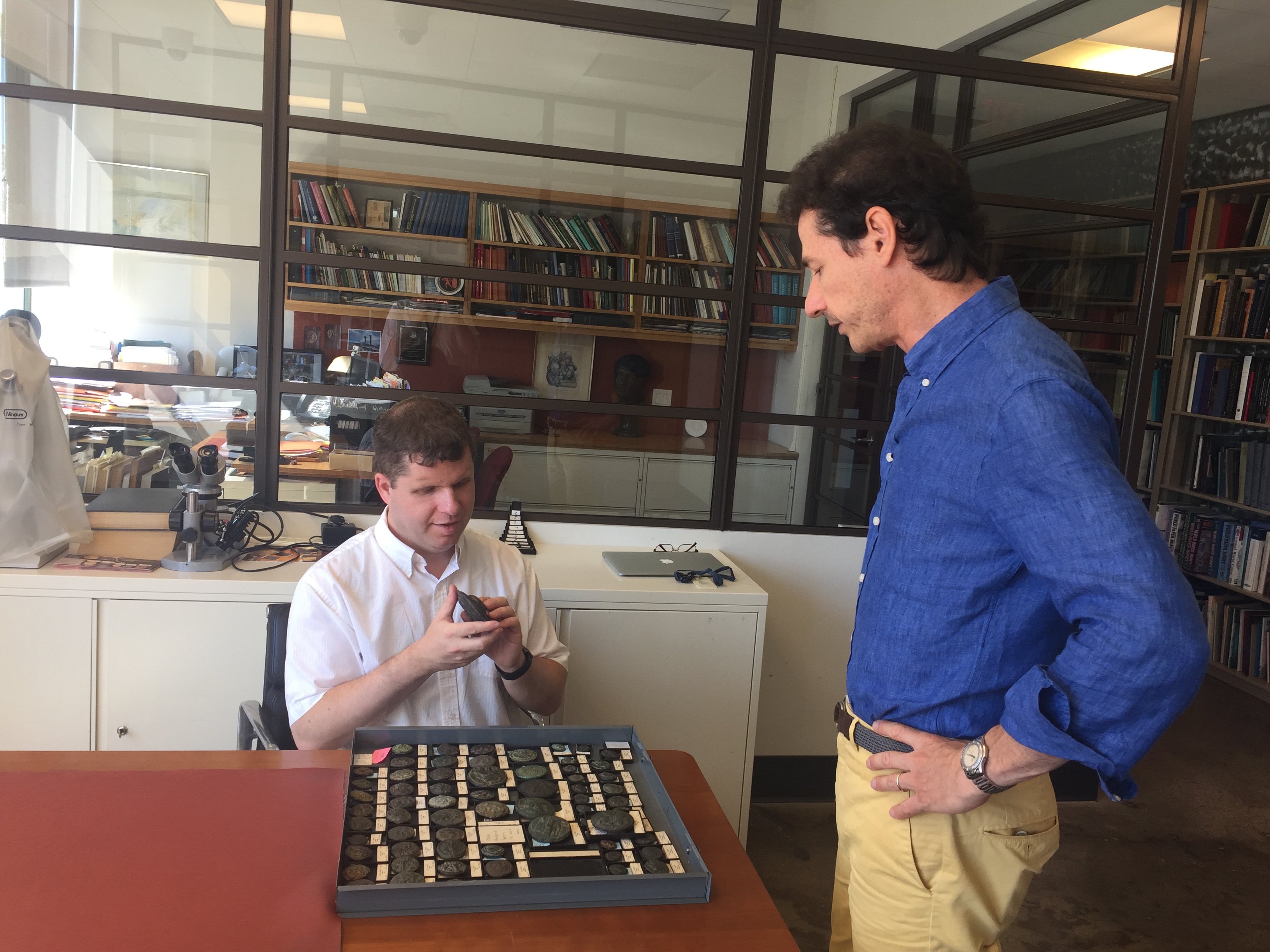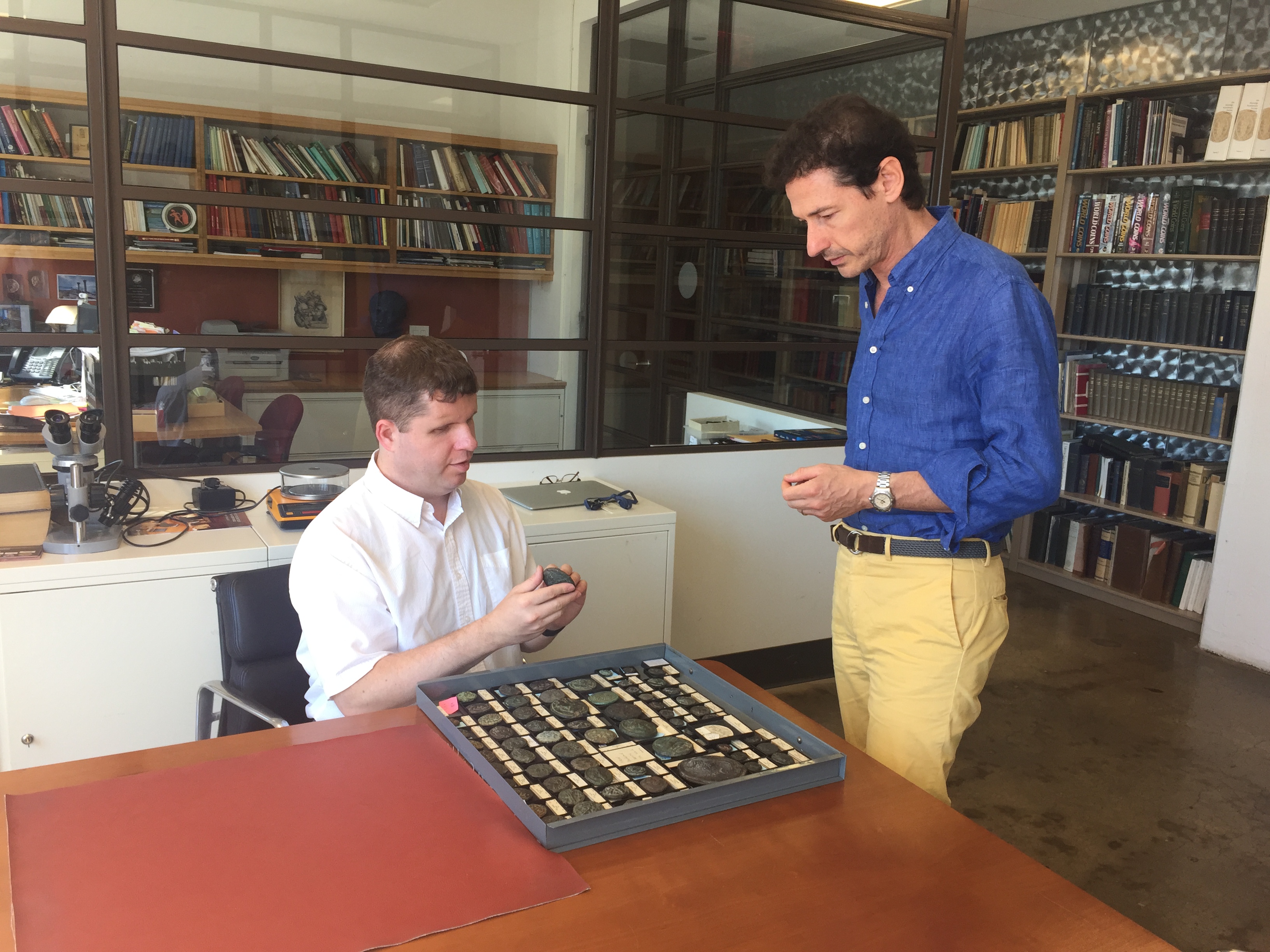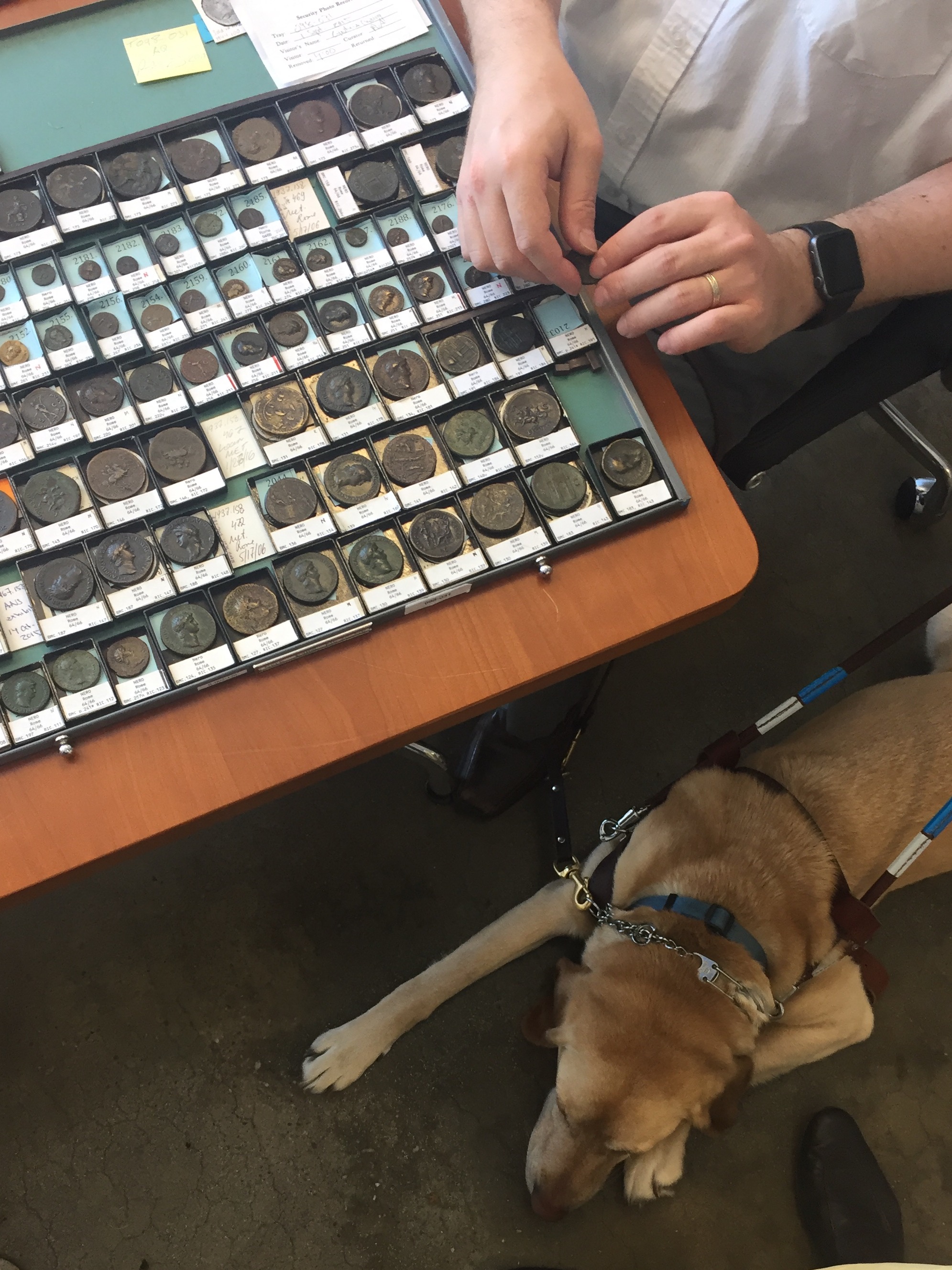I have been to New York several times during the past year, but for some reason, I could never arrange a visit to the American Numismatic Society. I either didn’t have time, or it wasn’t open when I was there. This time, my trip got scheduled so close to departure that I could only call the day before I left. I had no hopes, but never hurts to try, especially because this was something I really wanted to do. I got to talk with Emma Pratte, the membership assistant. I explained the situation, and she promised she will see what she could do. In a few minutes my phone rang: they can see me at a two days advance notice. I was lucky again. But what can I do, I always have to schedule my trips last minute.

During our initial conversation with Emma, she asked what was it that I was interested in. Well, dear reader who reads my blog, everything. But that’s not an answer. Or, whatever you can show me. Better for me, worse for the person organizing it. I have talked about this before, when I limit my options to what I want to see, it is harder to see the good stuff a museum has to offer. But if I say anything, or doesn’t matter it is not helpful for the people who are trying to help me have a good experience in the first place, and show me whatever I’m interested in. Given the number of coins the Ans has, which is about 700 thousand, it was not possible to see everything within an hour or so. But how do you decide? Most likely it would be difficult to find something there I’m not interested in.
So, here came an idea: how about Roman coins. I know practically nothing about Roman coins. During previous museum visits, I had a chance to touch a few, but it is such an immense field that I thought the Ans has something unique. So, why is it that I don’t know much about Roman coins? First, because you can only learn about so many things, and you make your picks. But Roman coinage in general is more difficult for me to understand and appreciate. Let’s just say that while I’m happy to read about something, what works best for me is reading about things I can potentially collect. No, I’m not going to skip the article about the most expensive coin just because I wasn’t the one who bought it, but I enjoy connecting the collection and the literature I read. So, I can easily grab a handful of contemporary Portuguese coins, if I’m not sure what it is, I can ask anybody to read the letters from it, even if they don’t understand what it is. I take notes, and I can research the rest. Not too independent, but doable. But when it comes to older, and more worn coins, this gets much more difficult. When you can’t read the letters from the coins, you have the catalogs you can flip through and try to identify a coin. In my case, this is way too much to ask for from anybody. So, aside from one Roman coin, I don’t have anything. However, I always wished I could learn more about it. It is certainly a fascinating and diverse topic.
But back to the visit. Gilles Bransbourg, one of the museum’s curator agreed to take time out of his busy schedule to show me a few things. And I’m not saying busy schedule just to be polite here. He was conducting a seminar the day I was there, yet he still found time to work with me.

I had a chance to touch several hundreds of coins.
The first tray was a collection of early bronze coins. I have touched old coins before, but nothing like these. Firstly, some of the coins were huge. Maybe as large as my palm, thick and heavy. The rest were also thick, a bit rough, and with less detailed pictures than later coins. It was fascinating to touch these coins, nothing like I felt before. It was a totally new perspective about what coins can be.
The second tray was only from Nero. It was surprising to learn how many different coins were made under one emperor. The coins felt more elaborate than the early bronze ones, and as it was pointed out to me, as Nero was getting older, his aging was much more pronounced on his coinage. I was able to feel it to some extent. It was amazing. On this tray I also had a chance to touch a bronze coin which was valued at about $50000.
I had time to go through two more trays of coins in less detail.
So, let me answer a question I think you may have now. What’s the point of touching hundreds of coins in the matter of an hour other than for bragging rights to say that I had done it? The answer is more complex. Some of these coins are so fascinating, have such a complex history that one could spend days just learning about and researching them, one by one. But certainly, I did not have the time or the resources to do so. Do I know so much more about early Roman coins now? Definitely not. Just a few little facts. But here is the interesting part. If I have a chance to touch an early bronz coin, I will have no idea what early bronze coins looked like, other than the one I touched. But when tens of coins from approximately from the same era are displayed, it makes more sense in context. It gives me an idea about what it may have felt to pay for something over 2000 years ago. If I had a coin from Nero, it would probably be nothing more than bragging rights, not even a fancy one. However, going through tens of Nero’s coins almost put me back into those years, remembering little facts I read about him and his era, and put it in context with the coins. I remembered reading all about the huge feasts people had, and also the fact that Nero became a big man by the end of his life, most likely due to these feasts. Now, as I was able to feel it on the coins, it was a truly remarkable experience. So, what didn’t seem like a sophisticated approach to going through hundreds of coins in an hour was a true milestone in my numismatic experience.

The visit to Ans inspired a few more thoughts, about a book, or the database they maintain, but I already wanted to write about the Roman coin database in a separate post anyway. After I read about it a few weeks ago, I just never got to it. And I’m so glad I didn’t yet, because now I’ll approach it differently. So, more on these thoughts later.
For now, a big thank you to Emma and Gilles, and all the other people who made this experience happen. People who can see can look at catalogs and internet resources. For me, the only way of understanding many coins is by touching them, and there are only a few places I can. The Ans is one of those few places, so I really appreciate the opportunity.
